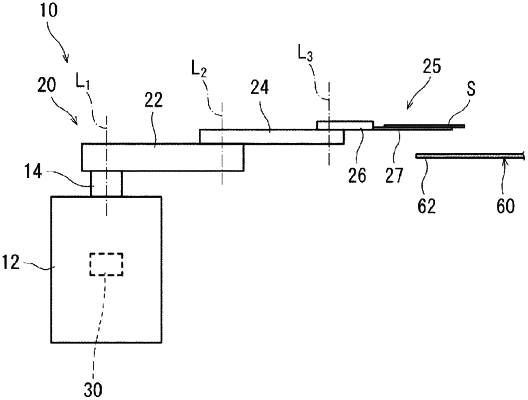| CPC B65G 47/905 (2013.01) [B25J 9/1664 (2013.01)] | 6 Claims |

|
1. A robot control device configured to control operation of a robot configured to transfer a substrate while holding the substrate, the robot comprising:
a robotic arm having at least one joint axis; and
an end effector provided to a tip end of the robotic arm and configured to hold the substrate,
wherein the robot is disposed adjacent to an installation position at which the substrate is placed,
wherein the substrate becomes in a first state where the end effector holds the substrate and the substrate is not placed at the installation position, when the end effector positions at a first teaching point above the installation position,
wherein the substrate becomes in a second state where the end effector does not hold the substrate and the substrate is placed at the installation position, when the end effector positions at a second teaching point below the installation position,
wherein the robot control device switches between the first state and the second state by causing the robot to perform a first operation to move the end effector from either one of the first teaching point and the second teaching point to the other one of the first teaching point and the second teaching point, and
wherein the robot control device is inhibited to determine whether the end effector passes the installation position, and to stop the end effector during the first operation.
|